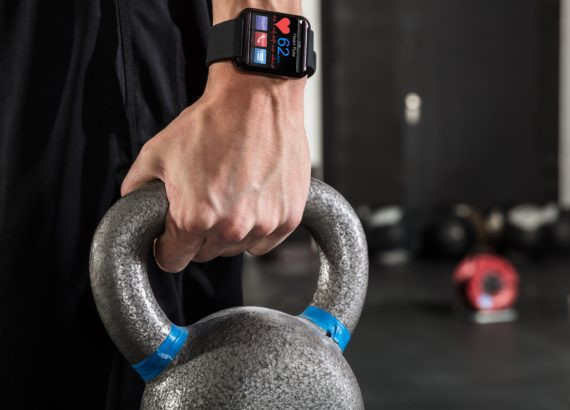The Internet of Things is changing the world of fitness as we know it. Smart fitness wearables have been around for a while now, but thanks to the pandemic, smart gym equipment has really taken off. Smart stationary bikes, weightlifting systems, and heavy bags can help you work smarter, not harder thanks to AI, two-way video and audio, and 3D sensors. Plus, these devices offer tons of on-demand classes, live instruction, and powerful online communities.
You still have to put in the reps, but you can track your performance, get personalized exercise content, and compete against others who use the same equipment.
Types of smart gym equipment
Smart gym equipment comes in all shapes and sizes. Some rely heavily on the internet, while others use machine learning or cameras and computer vision to track your progress. But what makes smart gym equipment really stand out from regular gym equipment is its ability to deliver content.
Check out these examples:
The online group ride
Perhaps the most well-known piece of smart exercise equipment is the Peloton Bike, which exploded in popularity during the COVID-19 pandemic. The Peloton Bike looks like a standard stationary bike, but it also has a touchscreen attached that allows users to view live or on-demand classes.
Peloton’s ability to offer digital content, including live instructor-led classes, has been key to their success and booming popularity. To access this digital content, Peloton users need internet connectivity to stream on-demand classes, participate in the leaderboard races, or go on a virtual ride with friends from living rooms all over the world.
Pelton offers other smart gym equipment like their Tread for running or the Peloton Digital app that allows users to stream on-demand fitness classes from a TV or mobile device.

Mirror, mirror on the wall, who’s the fittest of them all?
Mirror by Lululemon looks like a fancy wall mirror. But it’s also a screen that offers live and on-demand exercise classes. Mirror allows you to see both an instructor and yourself during a workout, which can be helpful if you need to check your form. As a user, you can also enjoy a variety of exercise classes, including yoga, dance, Tai Chi, boxing, kettlebell workouts, barre, and even family-friendly workouts.
Another awesome benefit is Mirror instructors who can offer real-time feedback and encouragement to you during your workout thanks to two-way cameras and audio. It also uses real-time optimization to adjust exercises based on your goals, preferences, and performance. Mirror can do this thanks to its embedded camera and its own special algorithms.
Stay pumped with a personalized smart gym
One of the trickiest parts of weightlifting is making sure you have correct form so you don’t get hurt. The weightlifting smart gym device, Tempo Studio, pairs 3D mapping and AI with good old-fashioned iron for a personalized weightlifting experience. The 3D sensors map your lifting technique, and real-time feedback and coaching can help you perfect your technique so you can make every rep count.
Because this smart gym equipment monitors your form, it can also help you track your progress and make recommendations for areas of improvement. The tool counts your reps and can also challenge you by recommending when to go up in weight. Tempo also offers live classes and coaches that can give you feedback in real-time. Like Peloton, Tempo features a leaderboard so you can compete to reach the top.
KO your workout
FightCamp is the smart gym equipment for boxers and kickboxers. It comes with a heavyweight bag and smart punch trackers to count all of your punches and tell you how hard you’re hitting. The workouts come via iOS app, which you can then stream to a TV to see live and on-demand classes. Like a traditional smart fitness watch, FightCamp tracks your workouts and offers valuable stats.

What makes smart gym equipment different than traditional gyms?
Smart gym equipment largely offers 1. Content and 2. Community.
The content that smart gym equipment offers is one of their key differentiators. The live and on-demand classes, as well as other fun activities, bring the gym to your home. It’s worth noting that accessing the content is often an additional expense for some already pricey equipment.
Secondly, these tools offer community. Peloton, for example, has created a thriving online community full of subreddits, forums, Facebook groups, and much more. Because you can connect with instructors and other fitness buffs in live classes, compete on leaderboards, and find friends on online communities, you can use smart devices like this to create the gym experience at home.
Creating your very own smart home gym
If you’re ready to create the ultimate smart home gym, there are a few things to consider:
- The price. Smart gym equipment ranges anywhere from just over $1000 to nearly $2500. Some of the tools mentioned above include the membership price for classes in the base price. For others, the subscription for on-demand and live classes is an additional cost.
- You will need a strong internet connection. Most smart gym equipment companies recommend a minimum of 10-15 Mbps for optimal function for their devices. But if you have a home with lots of smart devices or people streaming, you may need more bandwidth.
- Be sure the device you choose is compatible with the rest of your life. For example, FightCamp currently offers an app for iOS but not for Android.
Last words
Smart gym equipment doesn’t just help you get a great at-home workout. These powerful devices also stand out for creating content for users and building powerful online communities. If you didn’t see smart gym equipment for the type of workout you like to do, be sure to check out this smart stair stepper and this smart row machine.
Do you use smart gym equipment? Let us know what you use and why in the comments.








